
发布时间:2021-10-14
生活在纳沙泰尔:走进当地饮食文化
谈起纳沙泰尔的特色饮食,首先值得一提的要数当地的美酒与几种特色美食。让我们移步佳肴美酒之地,一起体会纳沙泰尔饮食中的朴素与醇厚悠长。
布德利城堡葡萄藤和葡萄酒博物馆
Château de Boudry
该博物馆位于庄严的布德利城堡内,是纳沙泰尔葡萄园葡萄酒商店的代表地。
在雄伟的城堡内,您会了解到关于酿酒和葡萄种植的所有演变过程,这里也是纳沙泰尔州的葡萄酒中心,您可以品尝到纳沙泰尔最好的葡萄酒。

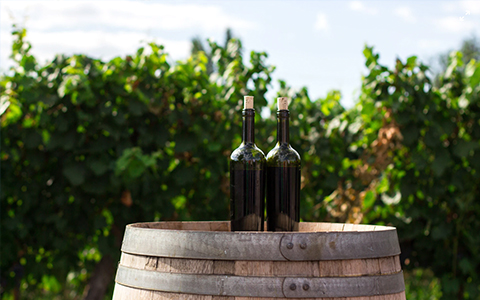
门票/导游服务价格
成人:7瑞士法郎
老年人、学生:5瑞士法郎
儿童(14岁以下):免费
团体价格(最少10人):5瑞士法郎
导游服务:100瑞士法郎(每位导游最多可带50人)
联系方式:
Château de Boudry
2017 Boudry
+41 32 842 10 98
chateaudeboudry@ne.ch
chateaudeboudry.ch
布德利地下品酒窖
Boudry Wine Tasting Cellar
让我们在这座迷人的塔楼里探索当地的葡萄美酒。
这座19世纪的建筑小巧精致,位于葡萄园中间。在楼里,您可以一边品尝着布德利地区的产酒商酿造的葡萄酒,一边将四周景色一览无余。
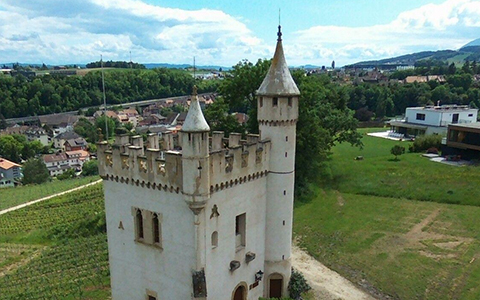
开放时间:
2021年5月20日至2021年10月31日
周五 - 周六
17:00 - 20:30
周日
11:00 - 12:30
16:30 - 19:00
票价:免费入场
联系方式:
Caveau de dégustation des vins de Boudry
Tour de Pierre
2017 Boudry
+41 32 842 59 16
caveaudesvinsdeboudry@yahoo.fr
caveaudesvinsdeboudry.ch
香布勒葡萄酒园
Chambleau Wine domain
香布勒酒庄位于科隆比耶(Colombier)村的高地上,位于纳沙泰尔葡萄园的中心地带,逾千年来,葡萄园里的葡萄藤在纳沙泰尔湖和汝拉山麓之间蔓延开来。
山坡上干燥的石灰岩土壤源自冰川冰碛,土壤下面是一层沙子和砾石,使葡萄藤能够深深扎根。这里的土壤所产的葡萄特别适合酿造黑皮诺和霞多丽。有几款葡萄酒便以其所在的地块为名,这是因为土壤赋予了它们特殊的品质。
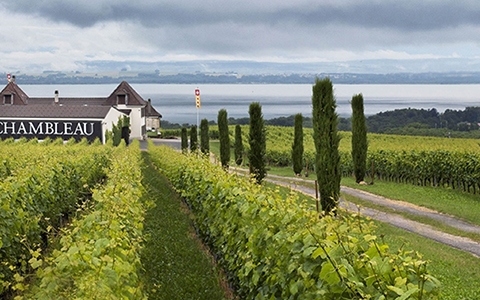
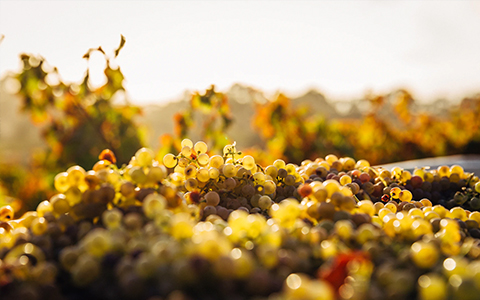
开放时间
需要预约
周五
17:30 - 19:30
周六
10:00 - 13:00
周一至周四
08:00 - 12:00
13:15 - 17:00
周五
08:00 - 12:00
13:15 - 19:00
周六
09:00 - 13:00
注意事项:最多4人一组
联系方式和地址:
Domaine de Chambleau
Domaine de Chambleau
2013 Colombier
+41 32 731 16 66
info@chambleau.ch
chambleau.ch
苦艾酒——当地烈酒
Absinthe
这款带有传奇色彩的酒,其禁忌之味值得追寻。
苦艾酒是一种茴香味的酒,它提取自植物,包括苦蒿的花和叶,以及绿茴香、甜茴香和其他药用和食用药材。
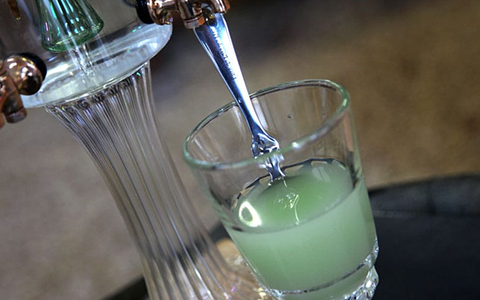
苦艾酒起源于18世纪末的瑞士纳沙泰尔州。在19世纪的巴黎,它迅速风靡。作为艺术家最喜爱的酒,它激发了众多诗人的灵感,并在他们的作品中得到了广泛赞誉。这种酒在瑞士具有传奇性的地位,直到1910年,因为有人指责它会令消费者变得疯狂而被禁止饮用。然而,直到禁酒期于2005年结束,该酒的秘密生产都从未停止。
在纳沙泰尔州的大多数酒吧和餐厅,您都可以点到一杯苦艾酒。
特色食品
瑞士美食结合了德国、法国和北意大利美食风味。不过,不同地区之间的美食具有较大差异,其大致的划分以各地区的语言为界限。但是,许多菜肴已跨越地区的边界,令瑞士各地对其情有独钟。
奶酪火锅
Cheese Fondue
融化的奶酪和面包块是奶酪火锅的灵魂。传统的陶瓷奶酪火锅“caquelon”里装着奶酪,吃的时候,用叉子挑起面包块,在融化的奶酪中旋转。
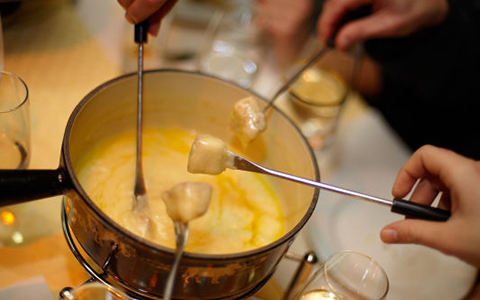
几乎每个瑞士孩子都知道什么才是地道的奶酪火锅:奶酪要柔滑细腻,既不能太厚也不能太薄,这样蘸着热奶酪的面包块才不会从叉子上滑落。奶酪火锅也有许多种不同的风格,其中风味最佳的一种是弗里堡的双拼奶酪火锅(Moitié-moitié),它由辛辣的瑞士格吕耶尔(Gruyères)奶酪和软糯的瓦什寒(Vacherin)奶酪制成。
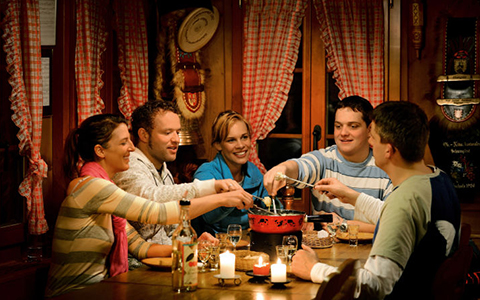
拉科莱特奶酪
Raclette
拉科莱特奶酪是瓦莱州的奶酪,由在阿尔卑斯山的牧场上吃草的奶牛的鲜奶制成,在不同的地区有不同的味道和口感。除了烹调方法多样、风味醇厚的瓦莱州干酪吐司 “croûte au fromage”(一种烤奶酪特产)以及奶酪火锅之外,拉科莱特奶酪是瓦莱州当地最受欢迎的奶酪菜肴,同时,其受欢迎范围也远远超出了该州的边界。传统做法是将它在木头或炭火上融化,并搭配土豆和一杯芬丹酒(Fendant)一起食用。
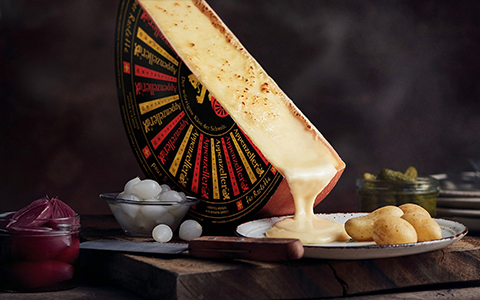
品尝拉科莱特奶酪,应该细嚼慢咽。匆忙的人需要的是三明治。拉科莱特奶酪能够鉴别出那些真正了解如何闲适和放松的美食家。拉科莱特奶酪款待的是神采焕发的朋友,以及那些追寻返璞归真、融而不拘于合的来宾。
罗斯蒂
Rösti
Röstigraben(意为罗斯蒂鸿沟)一词,颇为轻松地形容出瑞士德语区和法语区之间不同的观念与思想,但这种差异并没有延伸到厨房。
罗斯蒂最初是瑞士德语区农民的早餐,现在是瑞士的国菜,在Röstigraben边界线的两边都非常受欢迎。每个地区都有自己版本的罗斯蒂。例如,伯尔尼人以用黄油炸制的脆皮罗斯蒂而闻名。

将磨碎并煮熟的带皮土豆或生土豆做成扁平的饼,并将它在热的黄油或油中煎炸,就做成了罗斯蒂。这道菜除了土豆中含有的淀粉外,没有其它的黏性成分。
奶酪
Cheese
瑞士的每个地区都有自己的奶酪类型,这些多样风味都是由一种基本原料——上好的瑞士牛奶制成。Bleuchâtel、Britchon和Tomme Neuchâteloise都是美味的当地奶酪。

纳沙泰尔腊肠
Saucisson Neuchâtelois
纳沙泰尔腊肠可谓是香肠中的明星。
不论是圆形的腊肠(Saucisson)还是细长的小香肠(Saucisse),最重要的是馅料!纳沙泰尔人最喜欢的,是将三分之二的瘦猪肉搭配三分之一的培根,并与胡椒、大蒜和盐混合,形成一种辛辣的馅料。做熟了的香肠会被铺在一层蔬菜上面,或者将其包裹起来,在炉火里炖。
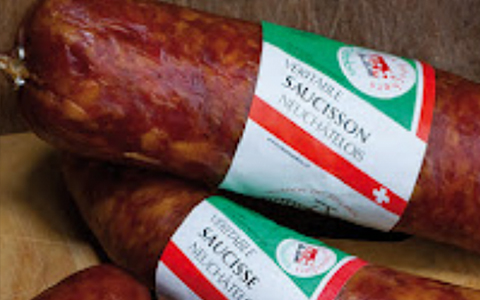
多蕾
La Torrée
多蕾,有时也被称为 “feux de berger(牧羊人之火)”,是纳沙泰尔的一项传统,它是在牧场上点燃篝火,并在余烬中烧烤香肠和土豆。传统上是在秋季进行(在牛羊群被圈进场后),但只要能找到一个好地方,一年中的任何时候都可以办一场多蕾。
一人份食材
准备工作
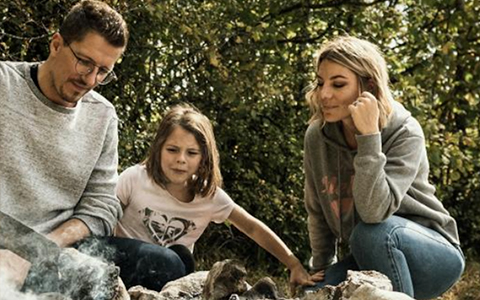
对于Torrée的制作地点,护林员建议选择一个远离幼树的开阔地带,并用石头将篝火围起来。较为受欢迎的地点包括拉罗贝拉(La Robella)、拉奇内山(Mont Racine)、拉萨涅(La Sagne)、普伊勒尔(Pouillerel)、阿曼山(Mont d'Amin)和普雷-路易斯特(Pré-Louiset)。
纳沙泰尔令人向往的除了美食美酒,还有她各处的名胜与文化地理风貌。下一篇里,让我们来一场观光之旅吧!
Original English Text
Wine and typical food in Neuchâtel
Château de Boudry
Museum, embassy of Neuchâtel vineyards and wine store in the superb Château de Boudry.
Learn all about the evolution of winemaking and viticulture within the walls of a majestic castle – also home to the Canton's wine centrewhere you can sample Neuchâtel's finest vintages.
PRICES
Prices per person
Adults CHF 7.-
Seniors, Students CHF 5.-
Children (up to 14 years old) Free
Prices for groups (min. 10 persons)
Entrance CHF 5.-
Guided tour (on request)
Up to 50 persons per guide CHF 100.-
CONTACT
Château de Boudry
2017 Boudry
+41 32 842 10 98
chateaudeboudry@ne.ch
chateaudeboudry.ch
Boudry Wine Tasting Cellar
Discover the local wines in a charming turret.
In a small 19th century architectural gem situated in the middle of the vineyards, you can taste the wines of the producers of the Boudryregion and enjoy a panoramic view.
OPENING HOURS
From 20 May 2021 to 31 Oct 2021
Friday - Saturday
17:00 - 20:30
Sunday
11:00 - 12:30
16:30 - 19:00
PRICES
Entrance Free
CONTACT
Caveau de dégustation des vins de Boudry
Tour de Pierre
2017 Boudry
+41 32 842 59 16
caveaudesvinsdeboudry@yahoo.fr
caveaudesvinsdeboudry.ch
Chambleau Wine domain
The Domain of Chambleau is located on the heights of the village of Colombier, in the heart of the Neuchâtel vineyard, which has been spreading its vines between the lake and the foothills of the Jura for over a thousand years.
The dry limestone soils of the hillsides are derived from glacial moraines and rest on beds of sand and gravel, allowing the vines to take deep root. They are particularly suitable for Pinot Noir and Chardonnay, which have found a preferred terroir here. Several of the wines bear the name of the parcel from which they come because this soil gives them a particular character.
OPENING HOURS
Reservation required
Friday
17:30 - 19:30
Saturday
10:00 - 13:00
Monday – Thursday
08:00 – 12:00
13:15 – 17:00
Friday
08:00 – 12:00
13:15 – 19:00
Saturday
09:00 – 13:00
Good to know: Group of 4 persons maximum
Contact & Address:
Domaine de Chambleau
Domaine de Chambleau
2013 Colombier
+41 32 731 16 66
info@chambleau.ch
chambleau.ch
Absinthe – regional spirit
On the trail of a legendary drink with a forbidden taste.
Absinthe is an anise-flavoured spirit derived from plants, including the flowers and leaves of Artemisia absinthium ("grand wormwood"), together with green anise, sweet fennel, and other medicinal and culinary herbs.
Absinthe originated in the canton of Neuchâtel in Switzerland in the late 18th century. It rapidly rose to success in the 19th century Paris. An artists’ beverage par excellence, it inspired numerous poets who praised it extensively in their works. The spirit attained a legendary status before it was prohibited in Switzerland in 1910, accused of making its consumers go crazy. However, its secret production never ceased during the period of prohibition, which ended in 2005.
You can order a glass of Absinthe in most bars and restaurant of the region.
Typical Food
Swiss cuisine combines influences from the German, French and North Italian cuisine. However, it varies greatly from region to region with the language divisions constituting a rough boundary outline. Mind you, many dishes have crossed the local borders and become firm favouritesthroughout Switzerland.
Cheese Fondue
Melted cheese with bread cubes. The bread cubes are picked up on the fork and swivelledin the melted cheese, which is served in a traditional ceramic fondue pot called ‘caquelon’.
What a Fondue has to be like (almost) every Swiss child knows: creamy, neither too thick nor too thin, so that the piece of bread one dips into the hot cheese mass does not slip from the fork. However, there are many different styles of Fondue. One of the best variations is the Fribourg one, the moitié-moitié, made from spicy Gruyères and softly melting Vacherin cheeses.
Raclette
Raclette. A Valaisan cheese made from the fresh milk of cows that have grazed on alpine pastures, differs in taste and texture from region to region. Alongside a well-seasoned Valaisan “croûte au fromage” (a toasted cheese speciality) and the variety of ways in which it can be prepared, and cheese fondue, raclette is the most popular of the Valais’ local cheese dishes that has meanwhile become popular far beyond the canton’s boundaries. Traditionally it is melted over a wood or charcoal fire and served with potatoes and a sparkling glass of Fendant.
Raclette is not a meal to be eaten in haste. Those in a hurry must be satisfied with a sandwich. Raclette sets apart connoisseurs who know how to switch off and relax. Raclette is for friends with spirit and charm, for guests in search of genuine simplicity, togetherness, complicity without obligation.
Rösti
The “Röstigraben” (Rösti ditch), which light-heartedly traces the difference in mentality between German-speaking and French-speaking Switzerland, does not extend to the kitchen.
Rösti, originally a farmers’ breakfast from German-speaking Switzerland, is now a Swiss national dish, highly popular on both sides of the Röstigraben. Each region has its own version. The Bernese, for example, are known for their crispy Rösti fried in butter.
A flat, hot cake made of grated, cooked jacket or raw potatoes and fried in hot butter or fat. The dish is bound by nothing apart from the starch contained in the potatoes.
Cheese
Each area of the country, each region has its own types of cheese – the diversity of products created from one single base ingredient – good Swiss milk. Bleuchâtel, Britchon and TommeNeuchâteloise are all deliciousregional cheeses.
Saucisson Neuchâtelois
The star in a sky full of sausages
No matter if it's a round Saucisson or a slim Saucisse - what counts is the filling! The people of Neuchâtel only like it best, if two thirds of lean pork meat and one third of bacon mingle with pepper, garlic and salt to form a spicy inner life. The cooked sausage is served on a bed of vegetable tables. Or it is wrapped and braised in the embers.
La Torrée
A torrée, sometimes called "feux de berger", is a Neuchâtel tradition that consists of preparing a big fire in a pasture and cooking sausages and potatoes in the embers. It’s traditionally done in the Autumn (after the flocks are brought in) but it can be organisedat any time of year provided you find a good place.Ingredients
for one person
1 Neuchâtel sausage
1 potato
cabbage leaves
baking paper
newspaper
string Preparation
•Build a big fire and wait for the embers to form.
•Wrap the sausage in the cabbage leaves, wrap very tightly with baking paper and then with two double layers of newspaper.
•Dip it in water (the newspaper should be really wet) and tie it up with string.
•Form a hollow in the embers and place the sausage packets inside, cover with embers and press everything down tightly.
•Place fir branches on top to give the sausages the typical forest aroma.
•Let it cook for 50 to 60 minutes.
•Unpack and enjoy.
•The potatoes can be braised (preferably wrapped in aluminium foil) for 20 minutes in the embers.
•Sausages already prepared for the Torrée can be bought, for example, at the Boucherie Centrale butcheries in La Chaux-de-Fonds, Le Locle and Cortaillod and at the Schneiter butchery in La Chaux-de-Fonds (pre-order recommended; list not complete).
For the location, the forest rangers recommend choosing an open area away from young trees and surrounding the fireplace with stones. Popular sites include La Robella, Mont Racine, La Sagne, Pouillerel, Mont d'Amin and Pré-Louiset.
本文转载自雷梭勒家族办公室,如有侵权,敬请告知删除。
Sooswiss为您提供
瑞士方向私人管家式的定制服务:
1)家族传承 2)财富管理 3)瑞士投资
4)居留计划 5)税务优化 6)家族治理
更多资讯请登录网站 www.sooswiss.com
